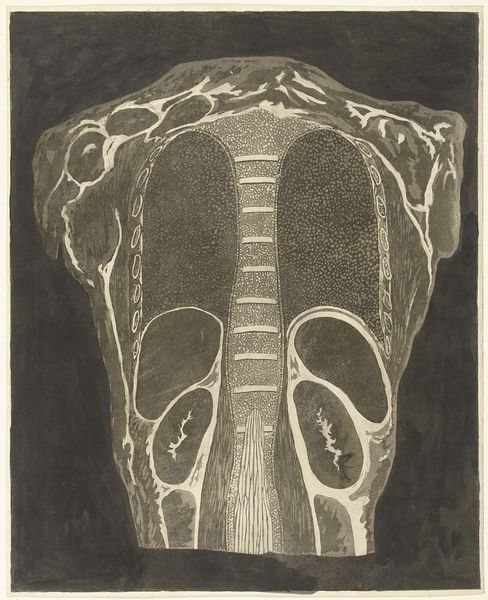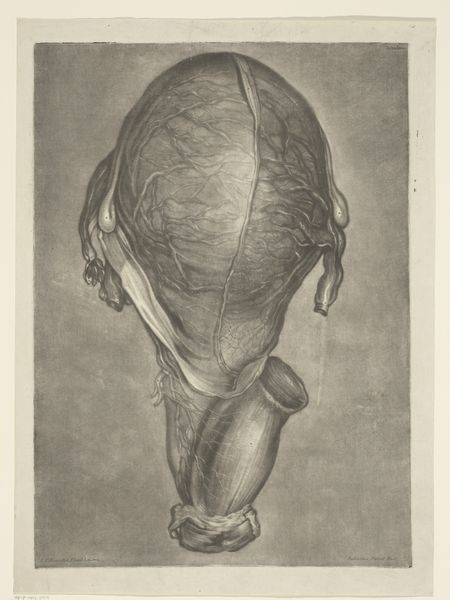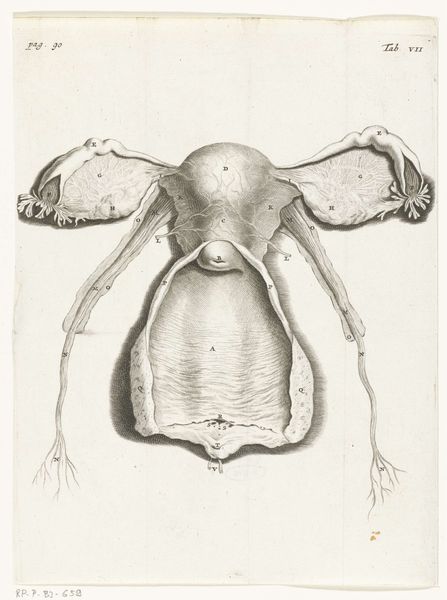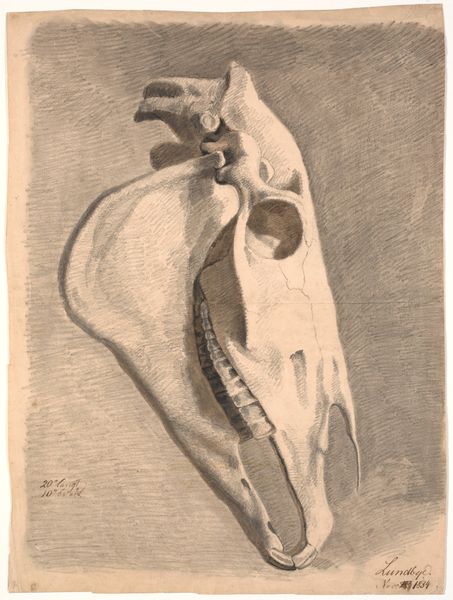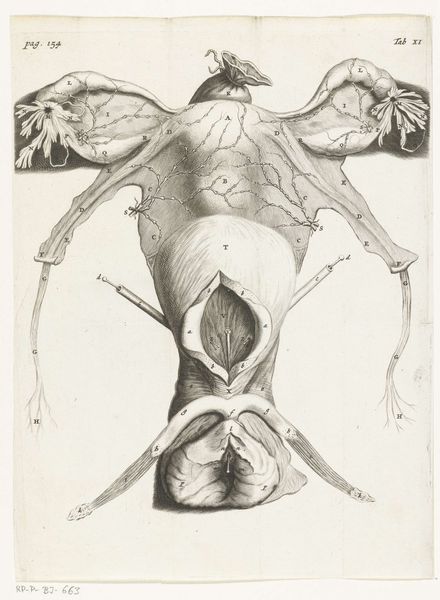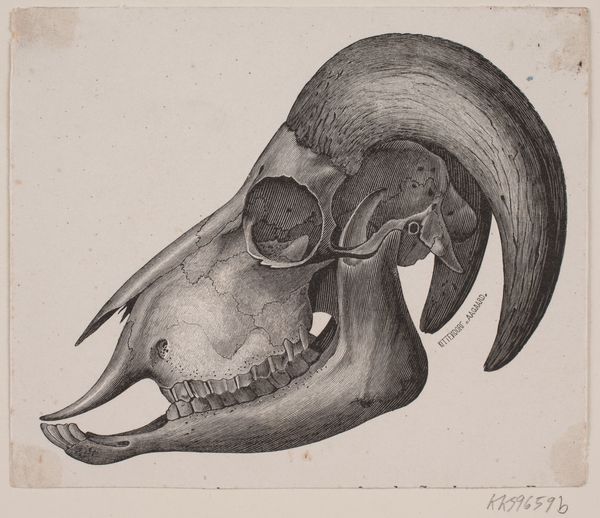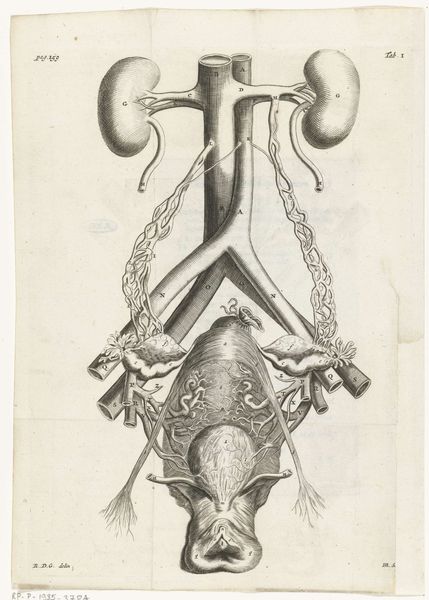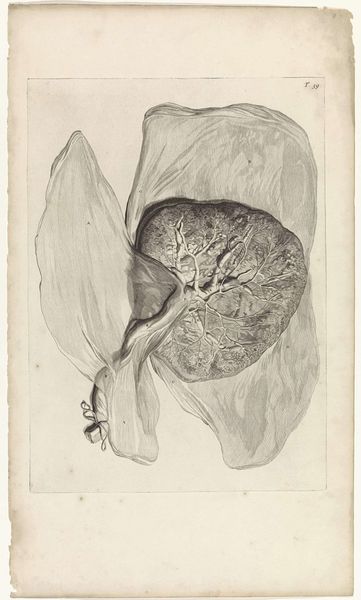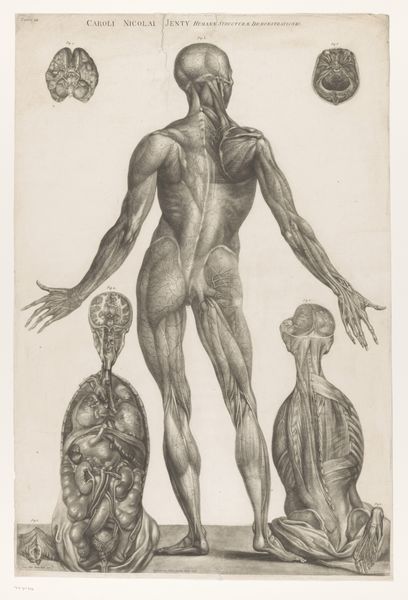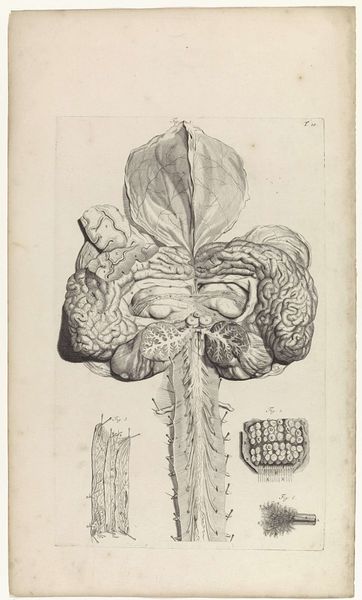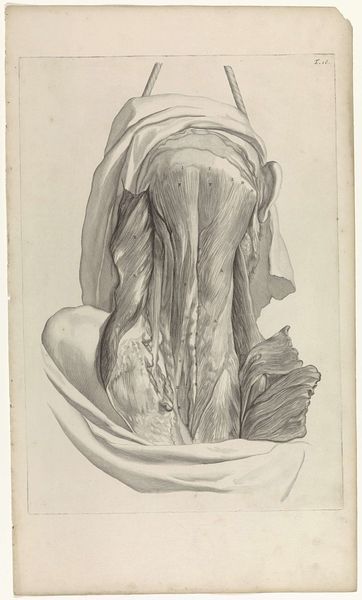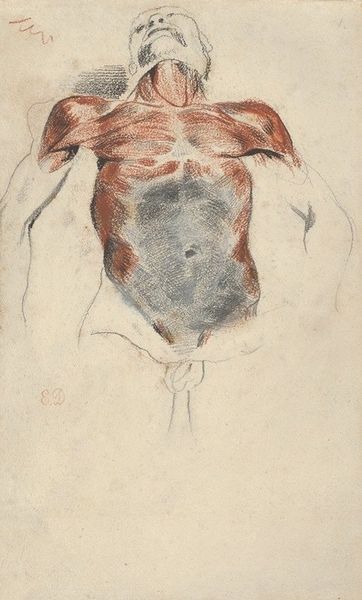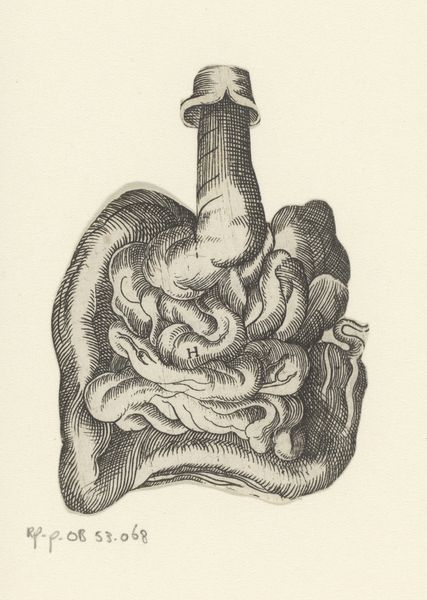
Anatomische studie van de organen in de borstkas, gezien vanuit de rug 1778 - 1838
0:00
0:00
anthonievandenbos
Rijksmuseum
drawing, watercolor
#
drawing
#
toned paper
#
caricature
#
oil painting
#
watercolor
#
watercolour illustration
#
academic-art
#
portrait art
#
watercolor
Dimensions: height 570 mm, width 465 mm
Copyright: Rijks Museum: Open Domain
Editor: Right now we're looking at "Anatomische studie van de organen in de borstkas, gezien vanuit de rug" (Anatomical study of the organs in the chest, seen from the back) made between 1778 and 1838 by Anthonie van den Bos. It's a watercolor and ink drawing showing a cross-section of the chest cavity. The level of detail is both fascinating and a little unsettling. What strikes you when you look at it? Curator: I see this as more than just an anatomical drawing. It's a product of the Enlightenment's drive to categorize and understand the human body, but also of specific institutional needs. Consider the role of art academies and medical schools during that time. They both needed visual representations of the human body: academies to train artists, and medical schools to train physicians. Editor: So, you're saying that the creation of such a detailed anatomical study reflects the growing importance of scientific and medical institutions? Curator: Exactly. Also consider how the rise of public museums influenced what was deemed worthy of representation. Anatomical studies like this, once confined to medical circles, started to gain public interest. Did the potential of public display maybe affect how these drawings were rendered? Were artists maybe paying more attention to their aesthetic qualities to attract attention? Editor: That's a really interesting point. It wasn't just about pure science; there was a performative aspect as well. The choice of media, watercolor, does seem quite considered in its creation of translucent layers of organic matter. Curator: Precisely. It pushes us to ask about the values projected by institutions, like medical facilities, and how art played a role in making them visible. Editor: I guess I've gained a new view for how medical illustrations provide unique insight to art’s purpose in disseminating new and innovative medical practices. Curator: I think so too. It reveals art as inseparable from historical trends and practices.
Comments
No comments
Be the first to comment and join the conversation on the ultimate creative platform.
